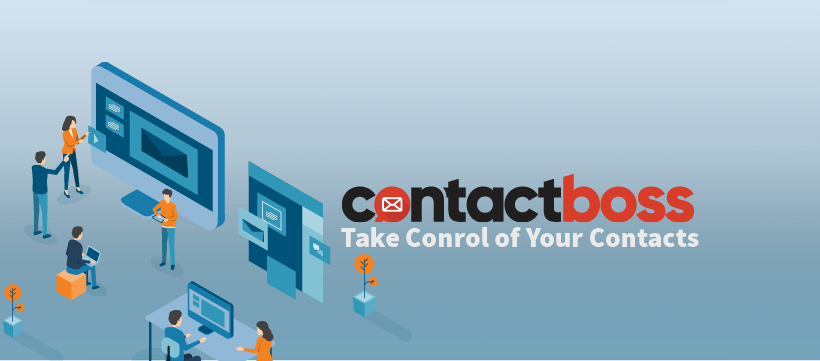In the fast-paced digital landscape, the significance of Social Media Optimization (SMO) cannot be overstated. Businesses of all sizes are increasingly turning to social media platforms to enhance their online presence, engage with their target audience, and drive traffic to their websites. To effectively harness the power of SMO, it’s crucial to leverage social media analytics. This powerful tool allows companies to track, measure, and optimize their social media efforts, ensuring that their strategies are data-driven and results-oriented. In this comprehensive guide, we will explore how to use social media analytics to improve your SMO, with a particular focus on the services provided by Tech2Globe Web Solutions, a leader in the field of SMO Services and the best SMO company in the USA.
Understanding Social Media Analytics
Social media analytics refers to the process of collecting and analyzing data from social media platforms to make informed business decisions. It involves tracking various metrics such as engagement, reach, impressions, clicks, and Data Conversion Services to gauge the performance of your social media campaigns. By understanding these metrics, businesses can identify what works, what doesn’t, and how to optimize their strategies for better results.
Key Metrics to Track
To effectively use social media analytics, it’s essential to focus on the right metrics. Here are some key metrics to track:
-
Engagement: This includes likes, shares, comments, and other interactions with your content. High engagement rates indicate that your content resonates with your audience.
-
Reach: Reach measures the number of unique users who have seen your content. It helps you understand the potential audience for your posts.
-
Impressions: Impressions refer to the number of times your content has been displayed, regardless of whether it was clicked or not.
-
Clicks: Clicks measure the number of times users have clicked on your content, links, or ads. This metric is crucial for understanding the effectiveness of your call-to-action.
-
Conversions: Conversions track the number of users who have completed a desired action, such as making a purchase or signing up for a newsletter, as a result of your social media efforts.
Tools for Social Media Analytics
Several tools can help you track and analyze your social media performance. Some of the most popular ones include:
-
Google Analytics: While primarily known for website analytics, Google Analytics can also track social media referrals and conversions, providing valuable insights into the effectiveness of your social media campaigns.
-
Hootsuite: Hootsuite offers a comprehensive social media management platform that includes robust analytics features. It allows you to track performance across multiple social media channels in one place.
-
Sprout Social: Sprout Social provides in-depth analytics and reporting, helping you measure engagement, track brand mentions, and analyze audience demographics.
-
Buffer: Buffer offers detailed analytics on post performance, engagement, and audience growth. It also provides recommendations for optimizing your content.
-
Tech2Globe Analytics Solutions: As the best SMO company, Tech2Globe Web Solutions offers tailored analytics solutions that provide deep insights into your social media performance, helping you make data-driven decisions.
Setting SMART Goals
Before diving into the analytics, it’s essential to set clear and measurable goals for your SMO efforts. Using the SMART framework—Specific, Measurable, Achievable, Relevant, and Time-bound—can help you create effective goals. For example, instead of setting a vague goal like “increase social media engagement,” you could set a SMART goal like “increase Facebook post engagement by 20% over the next three months.”
Analyzing Audience Demographics
Understanding your audience is crucial for creating content that resonates with them. Social media analytics tools provide valuable insights into your audience’s demographics, such as age, gender, location, and interests. By analyzing these demographics, you can tailor your content to better meet the needs and preferences of your target audience.
Creating Audience Personas
One effective way to leverage audience demographics is by creating audience personas. These are fictional representations of your ideal customers based on real data. For example, if your data shows that a significant portion of your audience is young professionals interested in technology, you can create a persona named “Tech-Savvy Tim,” a 28-year-old IT professional who loves staying updated with the latest tech trends. This persona can guide your content creation and marketing strategies.
Content Performance Analysis
Analyzing the performance of your content is essential for understanding what resonates with your audience and what doesn’t. By tracking metrics such as engagement, reach, and clicks, you can identify which types of content perform best and adjust your strategy accordingly.
Identifying Top-Performing Content
Use social media analytics tools to identify your top-performing content. Look for patterns and trends in the types of posts that receive the most engagement. For example, if you notice that your audience engages more with video content than with text posts, you might want to incorporate more videos into your strategy.
A/B Testing
A/B testing, also known as split testing, involves creating two versions of a post or ad and comparing their performance to see which one performs better. This can help you optimize your content and improve your overall SMO strategy. For example, you could test two different headlines for a blog post promotion to see which one generates more clicks.
Competitor Analysis
Analyzing your competitors’ social media performance can provide valuable insights and help you stay ahead of the competition. Look at their engagement rates, content strategies, and audience demographics to identify opportunities and areas for improvement.
Benchmarking
Benchmarking involves comparing your social media performance against industry standards or your competitors’ performance. This can help you identify gaps and set realistic goals for improvement. For example, if your engagement rate is lower than the industry average, you can focus on strategies to boost engagement, such as creating more interactive content or running social media contests.
Improving Social Media Engagement
Engagement is a critical metric for SMO success. High engagement rates indicate that your audience finds your content valuable and interesting. Here are some strategies to improve social media engagement:
-
Create High-Quality Content: Focus on creating content that is relevant, informative, and visually appealing. Use a mix of formats, such as images, videos, infographics, and articles, to keep your audience engaged.
-
Post Consistently: Consistency is key to maintaining an active and engaged audience. Create a content calendar and stick to a regular posting schedule.
-
Interact with Your Audience: Respond to comments, messages, and mentions promptly. Show appreciation for your followers’ engagement by liking and sharing their content.
-
Use Hashtags Strategically: Hashtags can increase the visibility of your posts and attract new followers. Use relevant and trending hashtags to reach a wider audience.
-
Run Contests and Giveaways: Contests and giveaways are a great way to boost engagement and attract new followers. Encourage users to participate by liking, sharing, and commenting on your posts.
Leveraging Influencer Marketing
Influencer marketing involves partnering with influential individuals in your industry to promote your brand. Influencers have a large and engaged following, and their endorsements can significantly boost your brand’s visibility and credibility.
Identifying the Right Influencers
Use social media analytics tools to identify influencers who align with your brand values and have an engaged following. Look for influencers who have a genuine connection with their audience and can authentically promote your products or services.
Measuring Influencer Performance
Track the performance of your influencer campaigns using social media analytics. Monitor metrics such as engagement, reach, and conversions to evaluate the effectiveness of the campaign. This data can help you make informed decisions about future collaborations.
Optimizing Ad Campaigns
Social media advertising can be a powerful tool for driving traffic and conversions. However, it’s essential to optimize your ad campaigns to get the best return on investment. Social media analytics can help you track the performance of your ads and make data-driven adjustments.
A/B Testing Ads
Just like with content, A/B testing can be used to optimize your ads. Test different ad creatives, headlines, and targeting options to see which ones perform best. Use the insights from these tests to refine your ad strategy.
Monitoring Ad Performance
Regularly monitor the performance of your ad campaigns using social media analytics tools. Track metrics such as click-through rates (CTR), cost per click (CPC), and conversion rates to evaluate the effectiveness of your ads. Use this data to make adjustments and improve your ad performance.
Utilizing Advanced Analytics Techniques
Advanced analytics techniques can provide deeper insights into your social media performance and help you make more informed decisions. Here are some techniques to consider:
Sentiment Analysis
Sentiment analysis involves analyzing the tone and sentiment of social media mentions and comments. This can help you understand how your audience feels about your brand and identify potential issues or opportunities. For example, if sentiment analysis reveals a high number of negative comments about a recent product launch, you can take action to address the concerns and improve customer satisfaction.
Predictive Analytics
Predictive analytics uses historical data to predict future trends and outcomes. By analyzing past social media performance, you can forecast future engagement, reach, and conversions. This can help you plan your content and marketing strategies more effectively.
Social Listening
Social listening involves monitoring social media platforms for mentions of your brand, competitors, and industry keywords. This can provide valuable insights into market trends, customer preferences, and potential issues. Use social listening tools to stay informed and respond promptly to any mentions or discussions related to your brand.
Case Study: Tech2Globe Web Solutions
To illustrate the practical application of social media analytics in improving SMO, let’s take a look at a case study of Tech2Globe Web Solutions, the best SMO company in the USA.
The Challenge
Tech2Globe Web Solutions was looking to enhance its social media presence and engagement to attract more clients for its SMO services.




